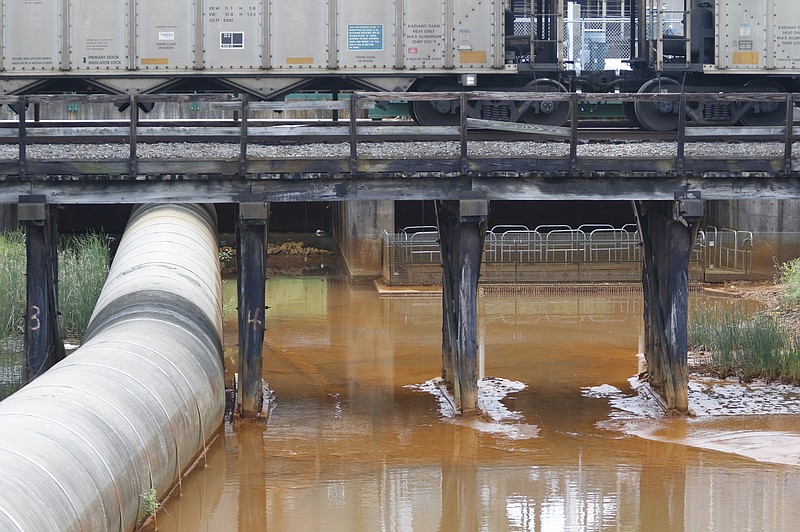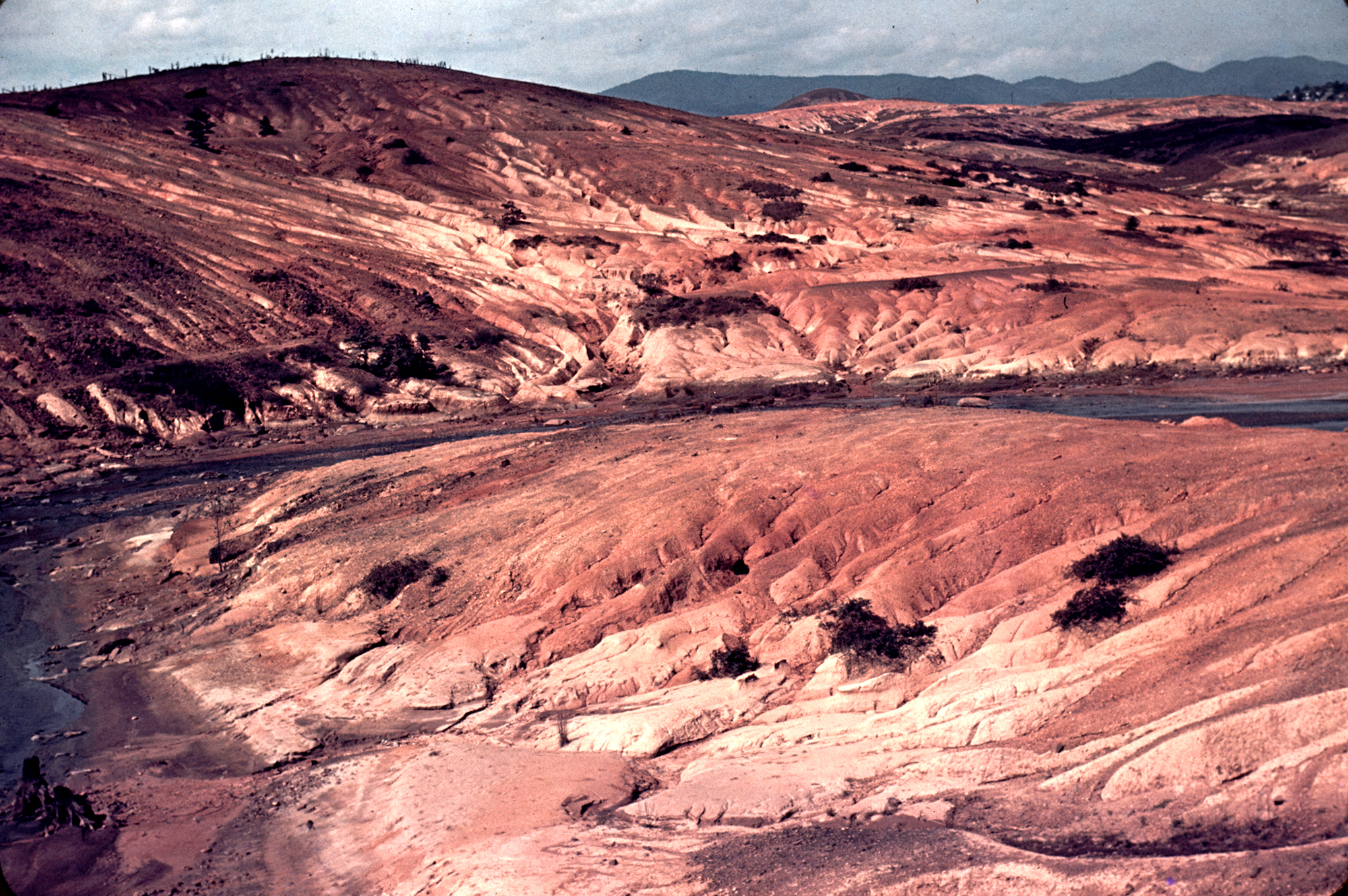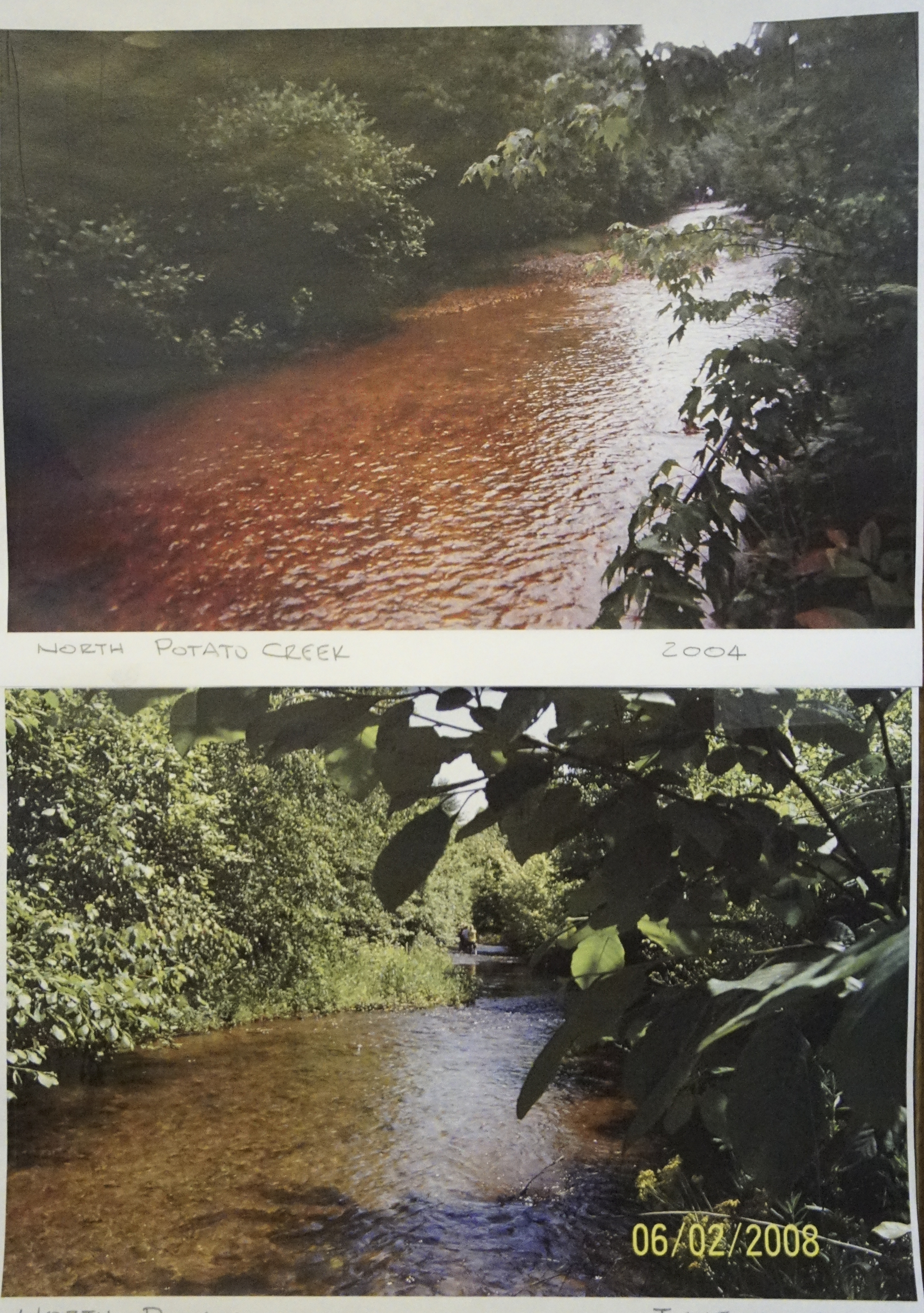Remediation since 2001 by Tennessee Department of Environment and Conservation contractors on the Copperhill Watershed Restoration project in Polk County led to an award for a Nashville-based firm.
Barge Design Solutions received the Grand Iris Award from the American Council of Engineering Companies of Tennessee.
"This shows how a collaborative, concerted effort over a period of several years can result in the kind of environmental commitment and responsibility we love to see in Tennessee," TDEC deputy commissioner Greg Young said in a statement. "This is an outstanding example of environmental stewardship."
The award was a couple of decades in the making, but the damage addressed by it stemmed from mining and smelting operations going back to the mid-1800s, when a man named Lemmons discovered copper on the banks of Potato Creek while he was looking for gold.
It recognizes the restoration of the Copper Basin after decades of mining and acid production left the entire area a rusty red. Barge Design Solutions handled that project for Glenn Springs Holdings Inc, TDEC 0fficials said in a statement. The businesses entered into an agreement in January 2001 to address acid rock drainage in the Ocoee River and North Potato Creek.
COPPER BASIN MINING
In 2014 when Ducktown, Tennessee’s Burra Burra Mine was targeted for renovation, a former miner, Bill Turpin, who was employed at the mine from 1968 till it closed in 1987, told the Times Free Press about the work and life when mining put bread on the table for Copper Basin families.Before diesel drills or electric pumps, men burrowed and blasted more than a half-mile down into the earth to bring out the precious ore.“It was slavish work before it was mechanized and you carried everything on your back,” said Turpin said as he sat with his wife, Ruth, in the Ducktown Basin Museum in October 2014. The then-68-year-old Epworth, Georgia, native said the Copper Basin’s mining history was important to preserve and future generations should know who the people were who eked out a living underground, where the work was unforgiving.“You had your dinner bucket, you had to carry in your drill, your air hose, water hose, you had to carry in all your explosives and all of that,” Turpin said in 2014. “You had to drill 12 feet into the rock face a series of holes, and when you got through drilling you’d charge it up with explosives and you would use delay caps to go out from the center … so you advanced 12 feet.”Ruth marveled at the operation when she once took a 3,400-foot-deep trip into the earth with her husband.You can never imagine,” Ruth Turpin said with a shake of her head. “When we got to the bottom, I was just amazed. There were roads and big trucks and big equipment going down there.”But the closed-in feeling, the smell of earth and rock, and the dark, were unnerving, she said.
The water clean-up effort followed two consent decrees that led to Glenn Springs Holdings, a subsidiary of Occidental Petroleum Co., entering an agreement with the Environmental Protection Agency and TDEC to dramatically improve water quality in the basin.
The Times Free Press reported on the milestone reached when the Department of Justice and the Environmental Protection Agency announced a $50 million settlement in April 2016 with OXY USA in the form of the two historic consent decrees.
For much of the 20th century, the Copper Basin was a travel destination for the curious who wanted to see the red, denuded, Mars-like landscape spread over 50 square miles of what was once pristine forest. The stark, barren scar across the Southern Appalachians was even visible from space.
As the last century wore on, mining slowed and eventually ceased in the late 1980s, and efforts to restore life to the land and water quality picked up. Commercial rafting operations began to spring up in the late 1970s, and attention focused more on the region with the 1996 Olympics whitewater competition. That left behind the heavily visited Ocoee Whitewater Center that stands at the site today.
Officials in 2016 called the project in the Copper Basin a success story, and Glenn Springs officials were already celebrating.
"It started in 2001, where every two months we were getting together with people from every technical level to plan out what was next," Rick Passmore, Glenn Springs' Copper Basin site manager, said in 2016. "It is really unique, and 15 years sounds like a while, but with the scale of the site, it's remarkable that things have happened and that you've seen the changes in water quality."
In announcing the Grand Iris Award, the American Council of Engineering Companies of Tennessee pointed to "restoration tasks and adaptive management" to complete remediation work in less than 20 years, transforming damaged watersheds into healthy streams and rivers, resulting in recreational and educational opportunities, officials said.
Contact Ben Benton at bbenton@timesfreepress.com or 423-757-6569. Follow him on Twitter @BenBenton or at www.facebook.com/benbenton1.


